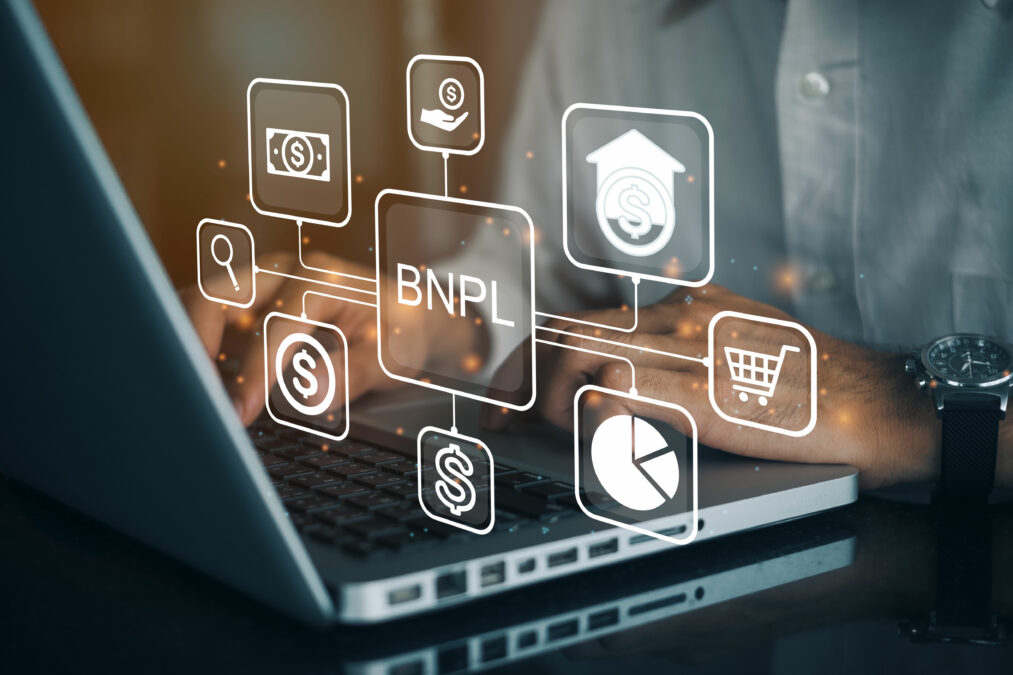Teodor Blidarus, CEO and co-founder of FintechOS, wonders whether buy now, pay later (BNPL) can remain a widely viable retail lending approach post-pandemic
BNPL is a hot topic for financial services. Lockdown has driven a surge in online sales, and BNPL is taking up market share as a digital alternative to traditional credit. Is it time for a showdown?
Online sales rose by over 30% over the first year of lockdown, with some industries seeing jumps of up to 60% in digital sales. BNPL allowed retailers to embed instalment payment plan options directly into the digital sales journey on their site during a period of rising online sales, but is this the only driver for the surges in the BNPL market?
In March 2021, The Ascent found more than 55% of consumers said they’d used BNPL, up from less than 38% in July 2020. 41% of respondents said they’d done so to save money in case of unforeseen circumstances, while 25% said it was because they’d already lost income.
Due to the coronavirus lockdown, consumers have been tightening their belts. This has made BNPL an attractive option for spreading costs out over a longer period, but what happens once the economy has returned to normal?
Fraud scenarios in the ‘Buy Now, Pay Later’ ecosystem
Can Gen-Z be trusted with BNPL?
BNPL may be a new buzzword, but it’s not a new concept. It’s estimated that, nearly a hundred years ago, in 1925, one out of every seven dollars spent in the USA was as part of an instalment payment plan.
The popularity of paying for items in instalments was actually a primary reason for the Great Depression, as consumers taking advantage of this new purchase option fell behind on payments and got themselves into debt.
That’s the source of the very reasonable fear that BNPL will cause another credit crisis as it enables consumers to spend beyond their means. Over 30% of BNPL customers have made a late payment, so this doesn’t seem irrational.
Yet, reports have shown a 50% increase in the number of US consumers who claim to understand the consequences of BNPL. This isn’t surprising, given that 97% of young people believe financial literacy is important. With the younger generation becoming more financially savvy than their elders, is BNPL now a safer option than it once was?
Research shows 68% of Gen-Z budget and save more responsibly than their elders, while according to Finextra, more than a third of young people in the UK have over £1,000 in savings.
The pros and cons of BNPL
For consumers, BNPL means:
- No hard credit checks: Only a soft credit check is required, which won’t impact credit scores whether accepted or declined.
- No interest or fees: Since BNPL is paid in set instalments over a planned period, there is usually no interest charged. Likewise, since retailers pay BNPL providers to meet customer demand, consumers don’t need to pay fees.
- Retroactive take-up: Customers can take up BNPL retroactively on products they’ve already paid for if they have second thoughts or unforeseen circumstances occur.
Retailers, on the other hand, can expect a 20-30% increase in conversion. There only seem to be two outstanding points in favour of credit cards:
- Rewards and special offers: Firstly, credit cards often reward customers with benefits like travel insurance or frequent-flier miles. BNPL, however, could easily take on those options if consumers are interested in them.
- Flexibility: BNPL is a set plan that covers a specific purchase, whereas credit cards can provide a flexible amount of credit that can be used in various places, paid off in part, then spent once again. Yet, of course, this leaves the possibility open for debts to spiral out of control.
The three ingredients a software solution for digital payment needs
BNPL taking USD 10 billion from credit providers
It’s no wonder that BNPL is taking share of wallet from credit cards wherever they’re prevalent. In fact, McKinsey believes BNPL Fintechs are “…diverting USD 8 billion to USD 10 billion in annual revenues away from banks”.
This isn’t the end of the story for BNPL players, however. Various BNPL Fintechs, from Klarna to Affirm, are now offering credit cards to those users who trust their digital specialty, but still need the flexibility of traditional credit.
Not just content with taking a share of the pie from credit card providers, BNPL players are now coming for the rest of it. In this environment, it’s essential for traditional credit providers to offer the same kind of digital options.
Overcoming the barriers to BNPL
So, how can traditional credit providers and banks enter the BNPL space? It’s a recognised product model and straightforward to institute. There’s only one thing getting in the way: technology.
According to a BCG survey, 70% of companies failed at digital transformation and received almost no return on their investment. Digital transformation isn’t a sound investment, at the moment, so how do you enter the BNPL space without overhauling your technology?
That’s where high-productivity financial infrastructure comes in. Innovative digital technology can connect with your existing infrastructure and allow you to offer innovative embedded finance products like BNPL without having to replace your technology.
This is more than just a bundle of digital tools acting independently. It’s a new way of looking at banking architecture from the core out. Without it, BNPL providers will continue to take market share away from traditional credit providers who are stuck in a cycle of failed digital transformation.








